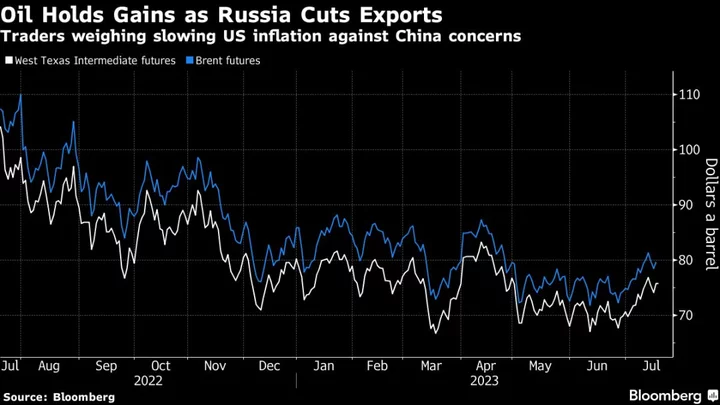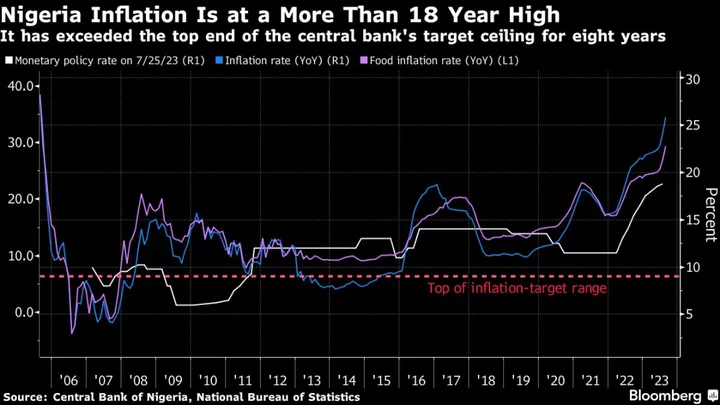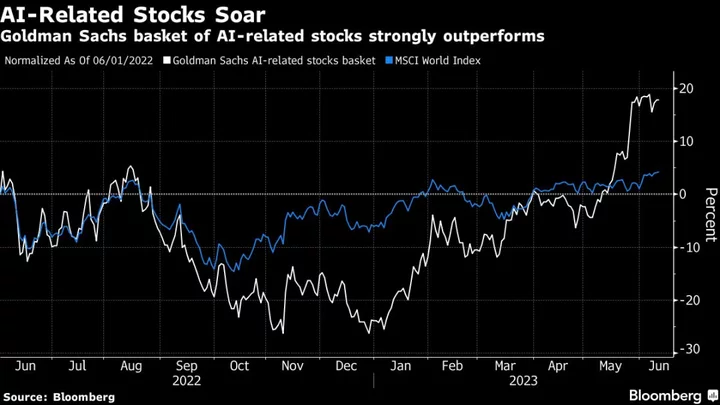Oil was steady in Asia after rising more than 2% Tuesday on signs Russia is making good on its pledge to curb supplies.
West Texas Intermediate traded near $76 a barrel after Russia’s seaborne crude flows fell to a six-month low in the four weeks to July 16. Crude was also buoyed by slowing inflation and an improving economic picture in the US that’s led to the dialing back of bets for higher interest rates.
Oil has been buffeted over the past couple of months as investors weigh China’s disappointing recovery against supply cuts by OPEC+ heavyweights Saudi Arabia and Russia and indications the Federal Reserve’s hiking cycle may be nearing an end. Prices have made a decisive break higher since late June on signs the market may finally be tightening, but are still lower for the year.
“Crude is trying to find its level after last week’s rally,” said Vandana Hari, founder of Singapore-based analysis firm Vanda Insights. It’s “vulnerable to volatility” amid the second-quarter earnings session and an intensified debate over the Fed’s rate trajectory, she said.
Moscow said it aims to reduce its third-quarter crude export plans by 2.1 million tons, in line with its previously stated pledge to cut overseas shipments by 500,000 barrels a day in August.
The industry-funded American Petroleum Institute said that US oil inventories fell by 797,000 barrels last week, according to a person familiar with the data. Stockpiles at the storage hub in Cushing, Oklahoma, dropped by 3 million barrels last week. That would be the biggest decline since October 2021, if confirmed by the official Energy Information Administration due Wednesday.
Meanwhile, Brent’s prompt timespread was at 13 cents a barrel in backwardation, near the narrowest this month, in a sign that traders are becoming less bullish.
To get Bloomberg’s Energy Daily newsletter direct into your inbox, click here.
--With assistance from Sharon Cho.









